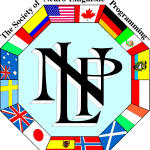
Our five senses, or our representational system, are called Modalities. In NLP Sub-modalities are the special sensory qualities perceived by each of the five senses. The sub-modalities can be seen as the parameters of the modality. To get you started, let’s introduce the sub-modalities of our modalities:
These are just examples of properties of the modalities or Representational System. Asking these properties to the person you are interviewing gives you an indication. As a result it indicates of what the specific memory this person has. Hence, keep in mind that utilizing these properties enable you to do make your work easy. It keeps the memories of the person you work with as anonymous as possible. Last but not least note that you are only asking the properties, not the content.
Because submodalities are qualities of sensory perception. Interpretations are complex secondary evaluations of perceptions and their meanings. In other words, submodalities are the way how we encode, store and decode experiences we have in our life.
Visual submodalities are the specific qualities and characteristics of how we perceive visual information. They help us understand and interpret what we see. Here are some key visual submodalities:
Together, these submodalities shape our visual experiences and influence how we react to our environment. Understanding them can enhance skills in communication, art, and design.
Auditory submodalities refer to the specific characteristics of sound that influence how we perceive and interpret auditory information. Here are some key auditory submodalities:
These auditory submodalities work together to shape our auditory experiences, influencing how we understand and respond to sounds in our environment, communication, and art.
Kinesthetic submodalities refer to the different qualities of physical sensations that we experience in our bodies. These help us interpret and interact with the world around us. Here are some key kinesthetic submodalities:
These kinesthetic submodalities shape how we physically experience and respond to our surroundings, enhancing our ability to connect with emotions, learn, and communicate through body language.
Objective: To change the way you perceive a negative emotion using NLP submodalities.
Materials Needed: A quiet space, paper, and pen.
Step-by-Step Guide:
Identify the Emotion: Think of a specific negative emotion you want to change (e.g., fear, anxiety, anger).
Recall a Recent Experience: Recall a recent situation where you felt this emotion. Take a moment to fully immerse yourself in that memory. Notice how it feels in your body.
Explore the Submodalities:
Record Your Observations: Write down your findings for each submodality category. This will help you clarify how the emotion manifests in different ways.
Change the Submodalities:
Start adjusting the submodalities:
Create a New Representation: Imagine this newly modified representation as your new way of feeling about this situation. Repeat this process several times until it feels more natural.
Anchoring: Choose a physical gesture (like tapping your fingers) to anchor this new feeling. Practice using this gesture while recalling the new representation to reinforce the change.
Reflection: Reflect on how the emotion feels after practicing the exercise. Write down any changes in your perspective.
Practice: Repeat this exercise whenever you encounter the negative emotion to strengthen the new response.
Conclusion: This exercise can help you understand and alter your emotional responses through the manipulation of NLP submodalities. Feel free to adjust the exercise according to your preferences and experiences for the best results.
Mind Tools provides NLP Practitioner and NLP Master Practitioner Trainings and Certifications. We educate you according to the renowned, latest and highest standards set by the Society of NLP. We will train you thoroughly in all the corners of Neuro-Linguistic Programming and some extras we learned from Richard Bandler directly.

Our NLP Practitioner Training starts in:
On Checkout use the code NLP10PCTOFF and gain an extra 10% off our already discounted price.